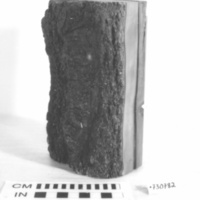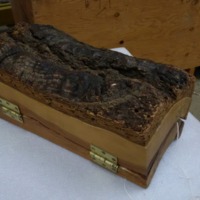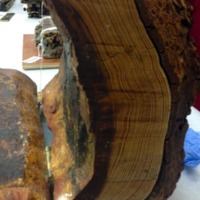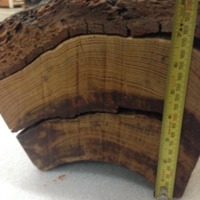Artifact: Surveyor's Use of Organic Material
The Douglas Fir is a hearty perrenial pine native to Canada's western coast (USDA Plant Database, 2015). They grow in abundance on Vancouver Island and were used by surveyors as boundary guides. This was done by a process called Blazing.
Tree Blaze:
" a mark made upon a tree trunk usually at about breast height. The bark and a small amount of the live wood are removed with an axe or other cutting tool, leaving a flat, smoothed surface which forever brands the tree. On rough-barked tree monuments or bearing trees the appropriate marks are scribed into a smooth, narrow, vertical blaze the lower end of which is about 6 inches above the root crown" (U.S Dept of Interior, Land Management "Glossary of BLM Surveying and Mapping Terms" 1980)
This is an image of the Cowichan Survey marker that depicts the result of blazing. Etched in the blaze are the symbols, "BT 13", which is assumed to stand for "bearing tree" at thirteen links (2.6 metres) from a marker. Links are a unit of measurment used by land surveyors to measure distance with a tool known as a Gunter's Chain. One hundred links equals one chain.



